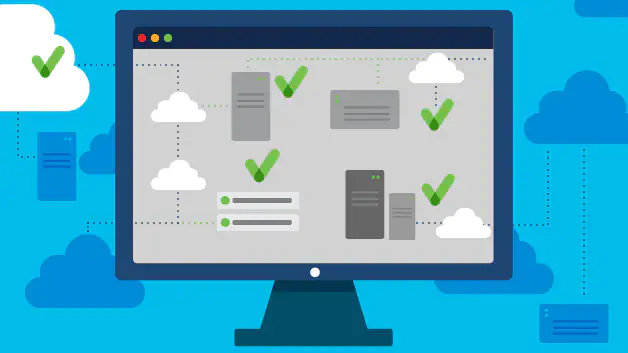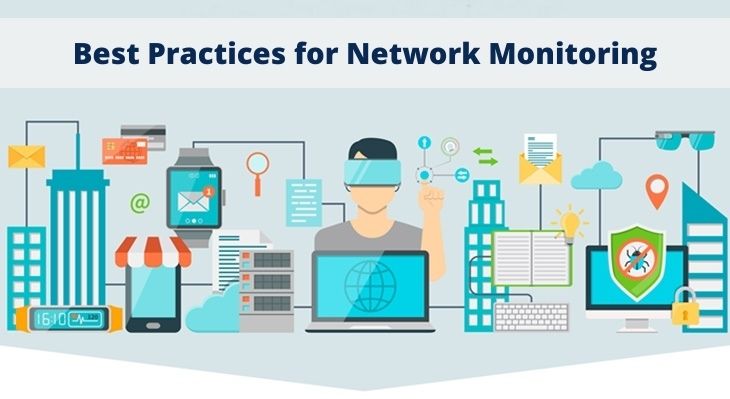Can companies afford to have network breakdowns or downtime in this digital-first era? No, they can’t. With digital transformation taking place across industries and increasing expectations to stay connected wherever you are, companies need to up their game and ensure they provide uninterrupted network services and high performance. Therefore, understanding network fault management and monitoring – what they are, and the benefits of using a fault management system can help you manage your network more effectively. We will discuss fault management in this article to give you an idea of its important role in your company’s success.
In this article, we’ll discuss about how network fault management can benefit your company and how to implement it in the best wat possible
Related article: Key Importance of Network Configuration Management
What is network fault management?
In computing, network fault management is the process of managing faults in a network. A fault is an error or condition that prevents a device or system from functioning correctly. Faults can occur in hardware, software, or firmware.
Network administrators use network fault management to identify, diagnose, and correct errors in the network. They also use it to prevent future errors from occurring. To do this, they use tools such as network monitors, which detect and report faults, and network management software, which helps them diagnose and fix errors. Network fault management is a critical part of keeping a network running smoothly. Without it, errors could go undetected and cause serious problems.
What role does network fault management play in companies?

Network fault management is a critical component of any company’s network infrastructure. It is responsible for identifying, diagnosing, and resolving network problems. With an effective network fault management system in place, companies would be able to maintain an optimal level of network availability and performance. Network infrastructure includes:
- Operations involving the network and your services make it essential to spot problems immediately and fix them before affecting the users.
- Network administration will cover the tasks involved in tracking resources and general upkeep necessary to keep it performing at peak.
- Maintenance, vital to network infrastructure, will fix issues and upgrade systems like operating systems, routers, and switches.
- Provisioning services are when you configure your network to support a customer’s need.
All of the above have tasks, processes, procedures, and tools that help companies manage their network infrastructure effectively.
Why is a fault management system important?
Network faults range from simple connectivity issues to more complex problems, such as data loss or corrupted files. An effective network fault management system must be able to identify and diagnose all types of faults to resolve them quickly and efficiently.
The tools and technology that help with network fault management include network monitoring, logging, and troubleshooting tools. These tools identify problems as they occur and in real time and take corrective action to resolve them.
In addition to monitoring and logging tools, network fault management systems often use predictive analytics. Predictive analytics is helpful in identifying potential problems before they occur. It allows companies to take proactive steps to avoid or mitigate the impact of these problems.
Network fault management is a critical part of maintaining a high-performing network. Companies can effectively identify, diagnose, and resolve network problems using the right tools. It ensures that their networks remain up and running with zero downtime. Fault monitoring is critical to network fault management.
The fault management cycle
The ongoing cycle of fault monitoring, inspecting network traffic for issues, and supporting rapid time to repair has five steps:
- Detection: Continuous monitoring allows immediate detection of anomalies in network performance.
- Diagnosis and isolation: Identify the source of the problem, and isolate it, so the network continues to function.
- Correlation: Analyze root causes and the potential effect of the problem.
- Restoration: Mitigate the issue and reestablish proper operations.
- Resolution: Confirm and document that the problem has been fixed.
The fault management cycle helps organizations identify, isolate, and correct system faults. It helps prevent outages and disruptions and ensures that their systems are running smoothly. The cycle begins with monitoring, which helps organizations detect faults in their systems. Once a fault is detected, organizations then work to isolate the fault so that it can be corrected, taking steps to correct the fault and prevent it from happening again. Organizations should also have procedures in place for dealing with faults that occur outside of the normal fault management cycle.
Fault management is critical to network infrastructure maintenance and offers several benefits.

Benefits of a network fault management system
Most organizations today are reliant on network systems to carry out mission-critical tasks. A network fault management system is designed to help identify, diagnose, and resolve problems on a computer network. Organizations reduce downtime, improve productivity, and avoid potential data loss by having a network fault management system. There are a number of benefits that a network fault management system can provide.
- First, it can help to identify problems quickly. By monitoring the network for potential issues, the system can provide early warning of problems that could lead to downtime. This allows the organization to take steps to avoid the issue and keep the network up and running.
- Second, a network fault management system can help diagnose problems. By analyzing data from the network, the system can help pinpoint the root cause of problems. This can save the organization time and money by avoiding the need to call in outside experts to troubleshoot the issue.
- Third, a network fault management system can help to resolve problems quickly. The system can help the organization fix the issue and get the network up and running again by providing step-by-step instructions. This can minimize downtime and keep the organization productive.
Overall, a network fault management system can provide a number of benefits to an organization. The system can save the organization considerable time and money by helping to identify, diagnose, and resolve problems quickly.
Final note
Network fault management and monitoring are critical for the smooth operation of any network. By definition, network fault management is the process of identifying, diagnosing, and correcting faults in a network. Network monitoring is the process of collecting data about the network and analyzing it for trends and potential problems. The benefits of network fault management and monitoring are many. Businesses can proactively identify and correct faults and avoid costly downtime and disruptions. By monitoring the network, companies can identify potential problems early and take steps to prevent them from becoming critical, saving a company time, money, and other resources.
FAQs
What are the four basic steps of fault management?
Fault management is proactively identifying and correcting system problems before they cause system outages or performance degradation. The four basic steps of fault management are:
- Problem detection: This step involves identifying system problems before they cause system outages or performance degradation.
- Problem isolation: This step involves isolating system problems to minimize the impact on system availability and performance.
- Problem resolution: This step involves resolving system problems to restore system availability and performance.
- Problem prevention: This step involves preventing system problems from occurring in the future.
What are the three main functions of fault management?
Fault management is a key component of system administration and is often used in conjunction with other processes, such as capacity management and availability management. The three primary functions of fault management are:
Fault detection:
Identifying faults within a system is the process. It can be done manually or through the use of automated tools. Performance monitoring is a standard method of fault detection. It involves tracking various performance indicators and comparing them against expected values. If a sudden drop in performance is observed, it may indicate the presence of a fault. System logs can also be helpful for fault detection. These logs record various events that occur within a system and can provide valuable clues as to where a fault may be located. Diagnostic tests are another standard method of fault detection. These tests are designed to identify errors or issues within a system specifically. Different methods of fault detection may be used depending on the type of system being monitored. However, performance monitoring, system logging, and diagnostic testing are three of the most common approaches.
Related article: Top 7 Key Features Your Network
Fault diagnosis:
This is the process of determining the root cause of a fault. It can be a complicated process, particularly with complex systems. There are many steps involved in fault diagnosis, but the most important ones are: Identifying, isolating, and analyzing the problem.
Fault resolution:
This is the process of resolving a fault. It can involve anything from restarting service to replacing hardware, finding a solution, and fixing the problem. Verifying the solution is also essential, as you want to ensure that the solution you implemented solves the problem and doesn’t cause any new issues. Essentially, fault management ensures systems’ stability, performance, and availability. And faults are best managed through tools and AI-enabled technology with automation that will handle the bulk of the routine tasks, offer analytics to recognize fault patterns, and ensure optimum performance.























